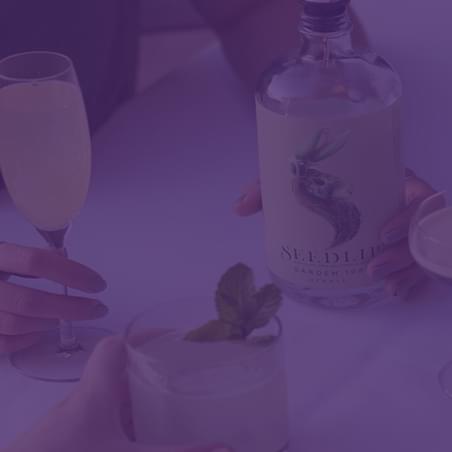Insights

28 Nov, 2025
Five Products: Showing How Sound Shapes Modern Consumer Experience
Read More
Annie Neller
19 Jul, 2021 | 5 minutes
At Nova, MMR's dedicated innovation team, we’ve identified a rapid development of chatbot technology for use in Consumer Research.
Our team has been putting current chatbot tech through its paces, to understand if it offers something that can benefit both our clients and end consumers. Following our experiments within this area, we’ve outlined 3 key advantages chatbots bring to consumer research.
Be it over Whatsapp, or WeChat, Instagram or Facebook, the majority of us share our stories, thoughts, & life updates on social platforms, and utilize their instant messaging capabilities to keep close to those around us. Over the last year, this technology has proven vital in helping us stay connected to our loved ones, bridging the gap when physical social contact became but a distant memory. It’s no surprise then that within the market research community this well-established means of communication is being leveraged in how we talk with and gain insights from our consumer base.
What’s more, as technology continues to develop, so too are the tools we can use to automate and streamline these conversations; integrating Machine Learning (ML) algorithms to dig deeper & gather richer insight. The key here is understanding that a real human is not always required to respond to what is being said and ask reactive questions, saving both time
and budget.
Here’s where chatbots can help...

Chatbots are conversational agents (Araujo, 2018), built from ML algorithms that digest and manipulate natural language. These bots mimic human conversation to engage the user and execute a range of tasks, for example, offering customer support. Whilst the original aim of chatbots might have been to pass something like the Turing Test (to be passable as a ‘real human’) (Shawar & Atwell, 2007), more recently, researchers have been warming to the idea that chatbots could work adequately in a more simplistic form; engaging in conversation with an end user to provide a personalized experience, despite said user being fully aware they are conversing with a machine. This environment is hoped to improve the user experience and increase their willingness to provide added insight around their opinions or behaviors.
Until now, chatbots have been primarily used in the customer service industry, but here at Nova we’ve identified a rapid development of the technology for use in consumer research, and we predict a steep curve adoption of the tech in the not-so-distant future. In anticipation of chatbots becoming ever more pervasive in consumer engagement, our team has been putting the tech currently available through its paces, to understand if chatbots really do offer something that can benefit both our clients and end consumers.
Following our experimentation within this area, we’ve outlined 3 key advantages chatbotsbring to consumer research.
There will always be an important place for qualitative exploration within consumer research – there’s no denying the quality and depth a team of well trained, creative qual-interviewers can bring to the table. However, with budget and time constraints ever more prevalent, there is a building need for flexibility in this area. Meanwhile, traditional quantitative surveys fail to offer nearly as much detail as qualitative methods, detail which is often invaluable to understanding the story behind the numbers.
It might be conjectured this lack of detail is related to poor consumer engagement, with consumers unmotivated in lengthy online surveys to offer thoughtful and expansive reasons behind their experiences. In this frame, chatbots offer us a new level of flexibility – more depth than quantitative surveys, whilst faster and more budget-friendly than qualitative approaches, providing an automated way to personalize discussions with hundreds of consumers.


For chatbots in the customer service industry, there’s a decision tree structure in the conversation being held – “what do you need out of X options” ... “ok, have you tried Y?”. For the most part, these fill the needs of the industry, providing an FAQ in a conversational format to save consumers’ time in search for an answer. There’s no denying that these chatbots aren’t perfect, and we’ve all experienced the pop up chatbots on sites which give you limited answers, perhaps even leading you to beg them to direct you to a human agent! Within consumer research, we need more from chatbot technology; we need to not only identify what people are saying but also how they are talking about it and dig down to gather more nuanced opinions. Some chatbots have this capability, and from our experience it appears some chatbots might be better at this than others.
For the most part, chatbots can be programmed to identify key topics or aspects of interest, and probe down on them to gain further depth from the consumer. More sophisticated chatbots can learn from conversations over time and converse spontaneously with consumers – essentially holding conversations ‘free-reign’. Sentiment analysis can also foster empathy within the conversation, to make the consumer feel like the chatbot really understands how they’re feeling about the topic of interest. In our recent investigations into this realm, we’ve found that chatbot probing significantly increases verbatim length, and provides additional depth of sensory detail. This means we were able to obtain more insight around product performance and development versus standard open-ended questioning. These various areas mean we’re able to gather richer insight, at scale, in a time and cost-efficient way.
Of course, such a large quantity of unstructured data means data analyses could become unwieldy. Natural Language Processing (NLP) is therefore a vital tool to get to the crux of the story, and something we’ll keep you posted on in the coming months…
Over the last few years, there’s been wide-scale disruption to the way businesses conduct consumer research, and it’s not just new technology that’s paving the way… it’s also consumers. In a world where popular apps like Instagram and TikTok cause trends to gain traction and crash and burn in the same sentence, there’s no denying that consumers are constantly evolving how they engage with content, express themselves, and likely, make decisions. In such a volatile environment, there’s a burning question about how consumers engage with the traditional and lengthy surveys sent to their inbox, and whether they really feel like they’re being ‘listened to’.
Often within product innovation, we ask the consumer to talk about what we as researchers, as brands, as innovators, think matter – and there lies a clear problem. We aren’t listening to what our consumers have to say. Chatbots offer an open and discursive line of enquiry, allowing consumers to put forward their own thoughts and reasoning, instead of promoting our own. Although the chatbot can be programmed to steer conversations towards key areas of interest, the conversation is ultimately led by the consumer. They give the detail they think matters, they talk about what they think is most interesting, and the chatbot simply listens and guides them through the process.
In our experience, talking to a chatbot drives more open, honest and relevant feedback.

Its clear to us that Chatbots won’t be going away any time soon – and as the technology continues to improve, so too will the insights we gain from our consumers. Chatbots offer a unique and engaging way to talk to consumers, deliver rich insights and put not only the voice, but the priorities of the consumer at the heart of innovation. There’s a lot we’ve found out through our recent experiments into chatbot technology, and we strongly advise a well-informed approach when building them into any one of your research projects.
Want to discuss how chatbots might work for you? Or struggling to find the right methodology for your research brief? Drop us an email.
Want to stay in know when it comes to consumer research tech innovation? Sign up to the Nova Partnership Initiative for updates on our tech innovation streams and exclusive access to pilot opportunities.
References:
Araujo, T. (2018). Living up to the chatbot hype: The influence of anthropomorphic design cues and communicative agency framing on conversational agent and company perceptions. Computers in Human Behavior, 85, 183-189.
Shawar, B. A., & Atwell, E. (2007, January). Chatbots: are they really useful?. In Ldv forum (Vol. 22, No. 1, pp. 29-49).
Insights

28 Nov, 2025
Five Products: Showing How Sound Shapes Modern Consumer Experience
Read MoreNews

25 Nov, 2025
'If Your Product Updates Don’t Match the Frequency of Smartphone Upgrades, You'd Better Rethink Your Strategy.”
Read MoreNews

22 Oct, 2025
NEWS RELEASE: Non-Alcoholic Beverage Inventor, Ben Branson Calls for More Originality
Read More